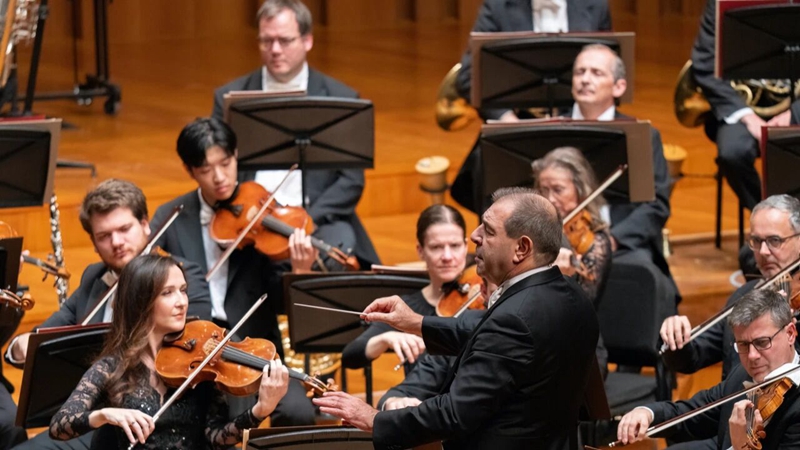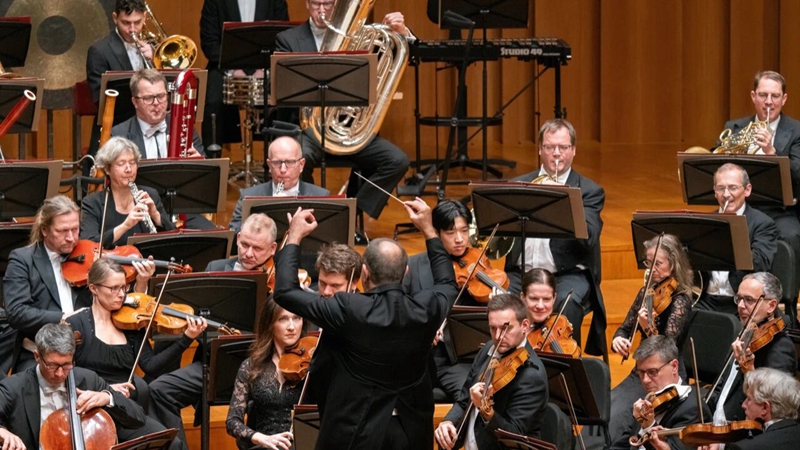On the night of November 1
st, the Staatskapelle Dresden appeared at the NCPA under the leadership of its new Principal Conductor, Daniele Gatti. They presented a great performance as a part of the "Pure Classical" series. The Staatskapelle Dresden played Webern’s string orchestra version of
Adagio and Mahler’s highly acclaimed Symphony No. 5. Under Gatti’s baton, the orchestra fully showcased its signature “sound of Dresden”, captivating the Beijing audience with its fantastically brilliant performance.
The concert featured a distinctive repertoire. It began with Webern's string orchestra version of
Adagio, then taking place without intermission. Composed in 1905,
Adagio bears witness to how Webern, a young follower of Mahler, was deeply influenced by late Romanticism in his early days. Under Gatti’s leadership, the string instrumentalists gave an amazingly delicate interpretation of this piece with effortless virtuosity. As they played it, there appeared half-step melodies in the music from time to time, filling it with strong emotional tension. Mahler’s acoustic world was thus clearly sketched out in the music. Conceived this way, the concert showed the audience how late Romantic music gave birth and gave way to modern music.
Mahler’s Symphony No. 5, composed in 1901 and 1902, is the best of his middle works. The piece begins with a funeral march, followed by a pastoral interlude, ending with a well-known adagietto and a finale - a hymn to life. It depicts a complete journey of destiny from darkness to light. Daniele Gatti’s interpretation of Mahler’s Symphony No. 5 was fully faithful to the composer’s intentions that night - the first two movements were put together as Part 1, the scherzo alone as Part 2, and the adagietto and finale together as Part 3. Gatti waved his baton, keeping the music structurally clear and logically progressive.
For the first movement - Funeral March, Gatti interpreted it sternly at a steady tempo, filling it with a solemn, lingering tragic flavour. The Staatskapelle Dresden’s signature warm, mellow and crystal-clear brass tone played a pivotal role at the very moment, with a greater emotional tempest soon to break out. The second movement is an extension of the funeral march, brimming with a strong sense of tragedy. The bright melody, which is very short, implies the composer’s strong attachment to his lost happiness.
The deep anguish is over, after all. The third movement, a scherzo, unfolds like a coloured folk painting. Gatti interpreted the Ländler in a flexible manner, with a space reserved in steady rhythms for free breathing. The rich orchestration was clearly expressed in the orchestra’s performance, thoroughly revealing the composer’s complex inner world.
The adagietto was performed on the harp and strings only, revealing its theme in a simple yet sincere ascending scale. Long and smooth melodic lines were created on the strings, sounding emotionally touching, yet not too sentimental. Under the baton of Gatti, the music became so beautiful in a seemingly meditative state, striking a chord with the heart. In the fifth movement, a grandiose one full of vigorous vitality, Gatti took a firm grip of the rhythmically powerful fugue, leading the orchestra towards the bright end together with their vigour and virtuosity, achieving an epic leap with light triumphing over darkness.
Tomorrow night, the orchestra will join hands with Bruce Liu, a Chinese-born pianist, to offer the audience more German-Austrian musical masterpieces, including Beethoven’s Coriolan Overture, Mozart’s Piano Concerto No. 23, and Richard Strauss’ Ein Heldenleben.









